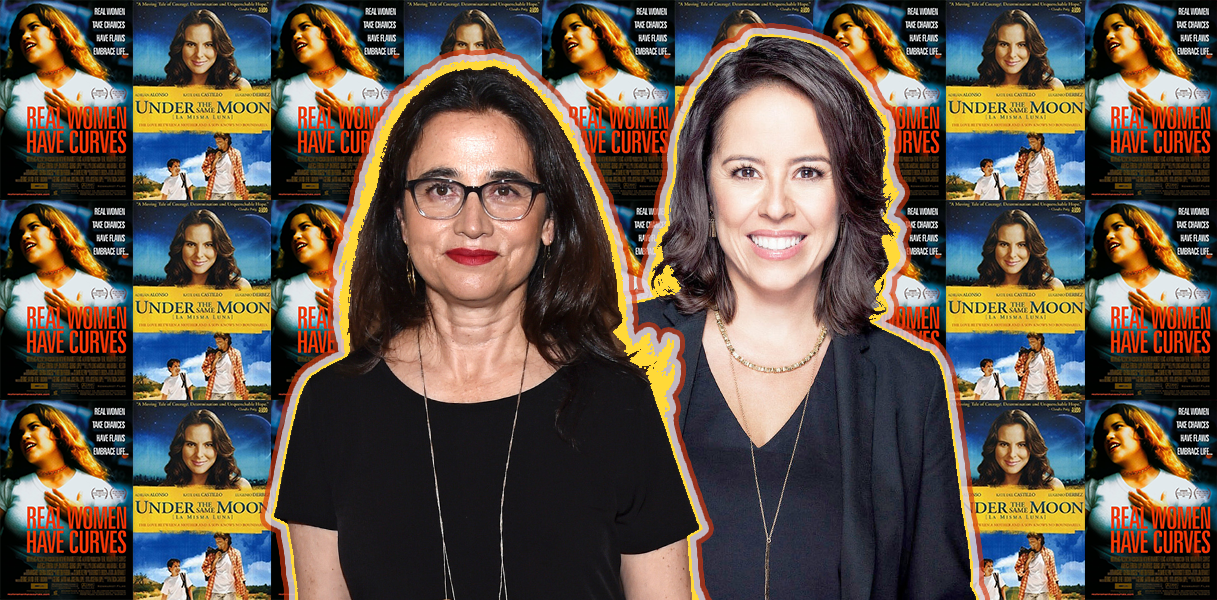Selena, La Bamba, and just about any Edward James Olmos film are highly regarded by the Latinx community for being the trailblazing classics they are. Having set the standard for Latinx representation for decades, these films also stand as a visualization of the lack of Latina directors and widely known Latina-directed films. The fact is the majority of the films that we’ve grown to love have been directed by men which is problematic, to say the least.
But when looking closely at the Latinx cinematic canon, there are two shining examples of the power of Latina directors — Bajo La Misma Luna directed by Patricia Riggen and Real Women Have Curves directed by Patricia Cardoso. These 2000s films are quintessential for our community in their portrayal of immigrants’ rights, machismo, familial bonds, and our culture’s sentimental tone. They are also examples of what can happen when Latinas lead behind and in front of the camera. Watching these films, with their female lens, the importance of Riggen and Cardoso’s perspectives and authenticity is clear to see.
With the recent phenomenon of Barbie, starring America Ferrera, the actress’s past work also got some buzz, including her film debut in the 2002 Real Women Have Curves. Based on a play by Chicana playwright Josefina Lopez, Real Women Have Curves is a coming-of-age story about Ferrera’s Ana, set in a textile factory in East Los Angeles. The film — like the play — takes the coming-of-age genre and complicates it with the nuances of being a young Latina in an immigrant household. Throughout the film, we see Ana struggle with her relationship with her mother, Carmen, in a way that is tied to cultural factors such as marianismo, traditional family values, and fatphobia. The film’s focus on experiences specific to Latina youth is especially important given that young Latinas often do not see themselves in coming-of-age films or stories. Without young Latinas’ experiences explored in film, it is almost as if we didn’t exist; Real Women Have Curves helps to address that erasure.

Just five years after Real Women Have Curves came another soon-to-be classic. Mexican director Patricia Riggen made her first full-length directorial debut with Bajo La Misma Luna (Under the Same Moon). It follows Carlitos, a young boy who—following his grandmother’s passing—decides to make the journey across the U.S./Mexico border to reunite with his mother Rosario (Kate del Castillo) who is working in Los Angeles.
Bajo La Misma Luna has become a staple of Telemundo, high school Spanish classes, and at-home comfort watches, making sure that new generations catch it whether they’re seeking it out or not. Written by Latina Ligiah Villalobos, it addresses issues critical to Latinx immigrant communities in the United States as we watch Rosario navigate the struggles of being undocumented in a country with blatant anti-immigrant sentiments as well as the pain that comes from being away from her son and family. Through Carlitos, we see the painful and dangerous journey children like him make to get to the United States. And through the other characters in the film—such as Enrique played by Eugenio Derbez—we see the hardships, perseverance, and hopes of Latinx immigrants who are the backbone of our community.
Riggen and Villalobos both approach this project authentically and personally, each having their own experiences immigrating to the United States from Mexico. Their sensitive and respectful portrayal of undocumented immigrants speaks to the importance of representation behind the camera just as much as in front of the camera. Riggen shows what can be achieved on film and what kinds of stories we can get when someone new sits in the director’s chair.

Following these pivotal films, both Riggen and Cardoso continued their work as Latina directors. After Real Women Have Curves, Cardoso went on to direct multiple projects including episodes of our favorite shows like Will Trent, Diary of a Future President, and the Latinx Party of Five. Riggen’s career has been diverse – directing titles ranging from the 2011 Disney Channel musical drama Lemonade Mouth to the modern Latina coming-of-age film, Girl in Progress starring Cierra Ramirez and Eva Mendes. She also directed the biographical film The 33 on the 2010 mining incident in Chile. Her success with Miracles from Heaven made her the only Latina director in the top 100 box office films that year and in fact, she was the only Latina with a top box office film from 2007 to 2022 according to the USC Annenberg Inclusion Initiative.
Having led a long list of beloved Latinx productions, Patricia Cardoso and Patricia Riggen are also inspirations. They’ve proven that Latinas can and do make excellent directors and we cannot wait to see more – from them and the next generation of Latina directors who are building on their legacy.

